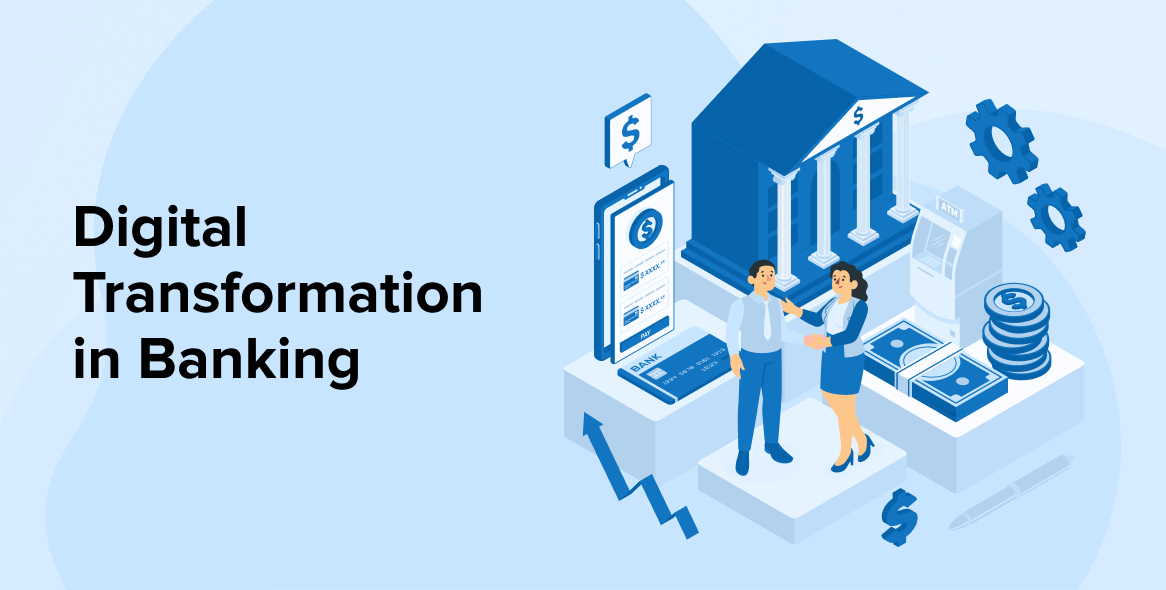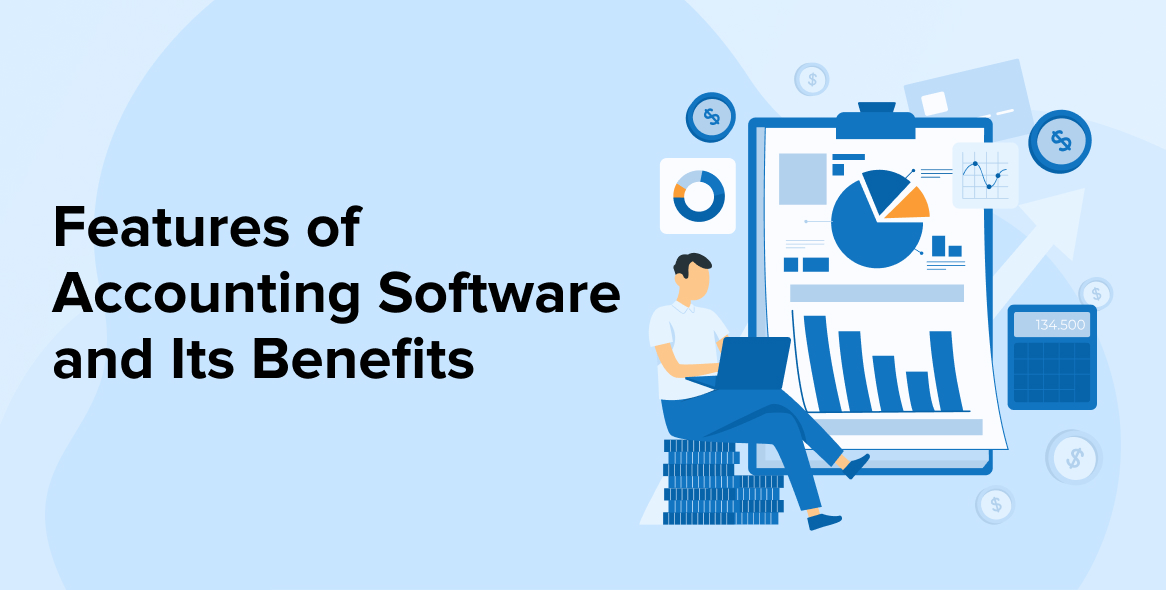
Customer Relationship Management (CRM) is used by businesses today to manage customer relationships and ensure a smooth user experience. Therefore, in a world with rapidly changing customer needs and expectations, CRM is a crucial requirement for banks and financial institutions.
In this blog post, we will explore CRM in the banking sector, its significant characteristics, the advantages it offers, the steps for implementing CRM software, popular CRM tools, the limitations of CRM implementation in banking, and future trends and innovations. This comprehensive guide on banking CRM can be referred to by financial institutions.
1. What is a CRM in Banking?

A banking CRM (Customer Relationship Management) system is a financial technology solution designed to help financial institutions provide a personalized experience to their customers. It aims to improve the efficiency and effectiveness of customer interactions by using modern-day technology. It provides a 360-degree view of customer preferences regarding financial services, allowing banks to gain valuable insights. Advanced banking CRM software enables banks to build detailed customer profiles, monitor interactions across multiple channels, and provide tailored services that address the specific and evolving needs of each client.
Take a look at what a Quora user says about CRM in banking.

1.1 Key Features of Banking CRM
Every CRM has its own unique strengths and weaknesses. However, certain fundamental features are essential for any CRM to be an effective solution:
1. Centralized Data Management
Centralizing customer data is essential for organizing the data in a preferred way to gain up-to-date insights. This helps in creating personalized business solutions, widening the customer base, and increasing the market reputation.
2. Security Certification
Banks contain customers’ sensitive information, which, if it falls into the wrong hands, can lead to serious consequences. Therefore, banks must implement robust security controls to protect customer information and comply with all the necessary regulatory compliance.
3. Personalized Communication Tools
Banks must send personalized emails, notifications, and messages based on customer behavior and preferences to increase the relevance of communication. For example, sending reminders before the EMI due date helps ensure timely payments and maintain a good CIBIL score.
4. Data Analytics and Reporting
Data Analytics tools help gain insights into customer preferences across different age groups, customers’ perceptions of products and services, spending patterns, social network analysis, and the creation of personalized marketing campaigns.
5. Automated Workflows for Client Management
When a new client opts for financial services, many formalities and documents can be time-consuming and hectic. An efficient CRM system automates these routine and mandatory tasks, allowing management staff to focus their time and resources on expanding the customer base.
1.2 Benefits of Implementing CRM in Banking
CRMs are now implemented in almost every customer-centric business domain. With the widespread adoption of digital banking, banks cannot afford to miss out on the benefits offered by CRM systems:
1. Increased Loan Sales and Profit Growth
The insights gained from banking CRM systems help in creating effective marketing campaigns and in directing marketing efforts appropriately.
2. Enhance Customer Satisfaction and Loyalty
A banking CRM enhances customer experience and loyalty by providing banks with a comprehensive view of each customer’s preferences, behaviors, and past interactions. This wealth of data enables tailored engagements and services that meet customers’ individual needs. As a result, customer satisfaction and greater trust increase, fostering long-term loyalty and a higher rate of customer retention.
3. Leverage a 360-Degree View of Every Customer
A banking CRM is a comprehensive repository of customer details. Every action a customer takes, whether withdrawing money from their bank account, opening a fixed deposit account, or inquiring about a specific type of loan, is recorded. Thus, this information can be used to align business goals with a customer-centric approach.
4. Enabling Better Decision-Making
Just having information is not enough; it’s important to use the information for effective decision-making. A banking CRM allows banks to make data-driven decisions to implement well-planned customer acquisition and retention strategies.
5. Compliance and Risk Management
CRMs are not only data-gathering tools, but also ensure compliance with the mandatory legal and regulatory standards to prevent unforeseen situations. As a preventive measure, they help analyze customer data and transaction patterns to identify potential risk areas and avoid future security issues.
2. How to Implement Banking CRM?
Implementing a banking CRM requires proper planning and an execution strategy to achieve the desired results. The following is a detailed guide that banks should follow:
2.1 Properly Assess the Requirements of Banking CRM
Requirement analysis is the primary step preceding the implementation of every major task. There are multiple steps to consider here, such as:
1. Determine Your Business Goals
Firstly, analyze the requirements of a banking CRM for your business. Think carefully about the objectives you want to achieve through CRM implementation. Is it to increase sales margins, improve customer retention rates, provide quality service to enhance user satisfaction, or optimize operational efficiency? Having clarity about your long-term and short-term goals will help you prepare a personalized strategy for successful implementation. It will also provide parameters to measure the effectiveness of the strategy.
2. Know Your Customers
Once you’re clear about the business goals, it’s time to engage with both existing customers and the potential customers you want to target for business expansion. Analyze their preferences, how customers from different age groups interact, the challenges they face, and what they’re looking for beyond the current functionalities. Improving the user experience for existing customers will naturally help increase the user base.
3. Identify the Features and Functionalities
Now that you’ve identified your business and customer needs, consider the characteristics and functions to be included in the CRM. Care must be taken to ensure that these functions are designed to align with user requirements. We have already discussed the essential features every banking CRM must have; the remaining features depend on the user’s preferences.
2.2 Search for the Best CRM Development Partners
For developing a CRM based on your needs, you’ll need the help of a reliable finance software development company. They can assist in overcoming difficulties related to developing a complex feature or managing the CRM at any stage. Conduct thorough market research and critically analyze client reviews of the CRM solution developed by reputable finance software development companies. Try to identify CRM solutions similar to the one you plan to develop and compare them against your requirements. This will give you a clear picture of what is already available and what additional features are needed.
2.3 Develop Custom Banking CRM
After getting correct guidance from CRM development partners, it’s time to develop a customized banking CRM for your organization. Although there are many CRM solutions available in the market, they may not meet your unique requirements. In such cases, customization and configuration become necessary. While many CRMs offer extensive customization and configuration options, some limitations may still exist. Hence, it’s better to develop a custom CRM solution.
2.4 Integrate with Existing Infrastructure
Keep in mind that the CRM solutions must be designed to ensure seamless integration with the existing infrastructure. The developed solution should easily connect with banking systems such as customer support platforms, risk management software, loan management systems, marketing campaign tools, transaction monitoring software, and digital channels.
2.5 Train Employees On Using CRM
The developed CRM will be effective and achieve its objective only when your organization’s employees embrace it completely. Provide adequate training not only on how to use the platform, but also on how it will benefit them in their daily tasks. Encourage them to provide relevant feedback to improve the software’s quality. You can even take help from CRM development partners to guide you in conducting training programs and sessions.
2.6 Continuous Monitoring and Optimization
Just deploying the software is not enough for long-term business support. CRM implementation is an ongoing process. Monitor the working of your CRM using KPIs (Key Performance Indicators) to identify the areas of success and opportunities for optimization. You must develop these KPIs according to your organization’s preferences.
Keep an eye on user feedback and make iterative improvements. Technology changes every day, which leads to evolving business requirements, so it’s important that your CRM stays relevant to current trends. Regularly update the system and perform necessary customizations to address the changes.
3. Top 3 CRM in Banking Tools
Let’s discuss the top crm banking tools:
3.1 Salesforce Financial Services Cloud

Salesforce Financial Services Cloud is a customized CRM solution designed specifically for the financial sector, including banking, wealth management, and insurance. It centralizes client data, enabling teams to access, manage, and analyze customer information from a unified platform. This helps organizations deliver personalized services, improve client engagement, and streamline operations.
Features of Salesforce FSC
- Implement Industry Workflows: FSC offers ready-made workflows that users can easily customize, enabling faster deployment without the need to build complex processes from scratch.
- Actionable Relationship Center (ARC): ARC helps users visualize client relationships, manage data, and create records for accounts, assets, liabilities, holdings, and financial goals.
- Interest-Based Targeting: It uses custom tags to track client preferences, enabling personalized customer service, better categorization, and insightful, tailored interactions.
3.2 Microsoft Dynamics 365

Microsoft Dynamics 365, built on Microsoft’s secure cloud platform, is a complete package of intelligent business applications that helps organizations simplify their operations, enhance customer engagement, and drive growth. It combines CRM and ERP capabilities, supporting functions such as sales, marketing, finance, customer service, and supply chain management. As it’s Microsoft-based, it provides seamless integration with other Microsoft tools like Office 365 and Power BI. Its modular design allows businesses to start with what they need and expand as they grow.
Features of Microsoft Dynamics 365
- Case routing: It automatically directs escalated cases to the appropriate queues using predefined rules, eliminating the need for manual assignment.
- Site Map Designer: The drag-and-drop site map designer allows users to easily create and customize site maps without needing external developers or designers.
- Relationship Insights: It is a tool that monitors and logs customer interactions, then analyzes this data to offer actionable suggestions.
3.3 Odoo

Odoo is an open-source all-in-one business management software. It provides modules for sales, accounting, inventory, human resources, and customer relationship management. This modular structure allows companies to customize the system based on their specific needs and growth.
Features of Odoo CRM
- Cloud Deployment: Odoo supports both on-premise and cloud deployment options to suit different business needs.
- Drag & Drop Interface: The intuitive user interface in Odoo simplifies navigation, enhancing the user experience.
- Extensive community support: Odoo has a large and active community of developers who contribute custom modules and other free resources.
4. Challenges of CRM in the Banking Industry

CRM implementation in banking is a transformative initiative in the digital space, but it has its own set of limitations that must be taken into consideration. So let’s discuss the challenges.
4.1 Data Security
Banks handle customers’ financial records, which are highly sensitive. Therefore, data privacy is a serious concern that must be addressed efficiently. Role-based access, data encryption, and data backups help prevent cyber fraud and ensure information security.
4.2 Inconsistent Customer Service
Today, customers access the banking platform through multiple channels such as phones, email, and chat. When data is fragmented across systems, service teams lack a complete view of customer interactions, making it difficult to resolve issues quickly or maintain consistent communication.
4.3 Integrating CRM with Existing Banking Systems
The integration with existing infrastructure presents data migration and data integration challenges. To address these, banks should choose CRM solutions designed specially for financial services, offering open APIs and pre-built connectors for seamless integration. These tools simplify connectivity with core banking systems while reducing development effort.
4.4 Competition From FinTech
Nowadays, FinTech companies provide innovative digital solutions to banking challenges, providing tough competition to traditional banks. Traditional banks that delay digital transformation risk falling behind, losing customers, and ultimately sacrificing market share to these more innovative competitors.
4.5 Legacy Systems
Legacy systems often lack modern architecture, making it difficult to integrate with new CRM solutions. Data migration in such cases requires careful planning to prevent data integrity issues. Therefore, it is important first to perform a detailed analysis to identify potential conflicts that could threaten compatibility in the future and develop a strategy to address them.
5. Future Trends and Innovations in Banking CRM
Let’s now discuss the common trends adopted by the banking CRMs to improve customer retention and stay adaptive and relevant in the future.
5.1 Generative AI (GenAI) in CRM
Generative AI (GenAI) is transforming CRM systems by going beyond basic automation and analytics. It uses customer data to provide clear, actionable insights, helping retail banks improve service and make faster decisions. AI models like GPT can offer financial advice, suggest next steps, and support customers efficiently. GenAI assistants also help summarize cases, draft emails, and explain data trends. With conversational AI, users can interact more naturally with CRM systems, improving productivity and engagement. CRM providers are now creating industry-specific language models to offer tailored insights for retail banking.
5.2 Blockchain Technology
Blockchain technology offers a decentralized and secure framework to strengthen the security of financial transactions. Maintaining a transparent and immutable ledger ensures data integrity and builds trust among banking customers. When integrated with banking CRM platforms, blockchain enhances data security, improves transparency, and supports a more reliable and customer-centric banking experience.
5.3 Open Banking
Open banking is a modern solution that allows banks to securely share sensitive customer data with third-party providers with the prior consent of the customer. This approach creates a more connected financial ecosystem, giving users access to diverse services according to their needs. It also promotes innovation and healthy competition, encouraging banks to offer more personalized and efficient banking solutions.
6. Final Thoughts
As technology continues to evolve, CRMs are becoming essential solutions in the banking industry to meet the customers’ changing demands and provide personalized services. Understand your business scope and implement the necessary solutions to increase the efficiency and responsiveness of the services offered.
FAQs
What is CRM in Payment?
CRM in payment refers to the use of customer relationship management tools to track, manage, and optimize customer payment interactions. It helps improve billing efficiency, customer service, and customer retention.
What is CRM in Billing?
Billing CRM is a software solution that integrates customer relationship management with billing features, enabling businesses to manage client interactions, invoicing, and transactions within a single unified system.






Comments
Leave a message...